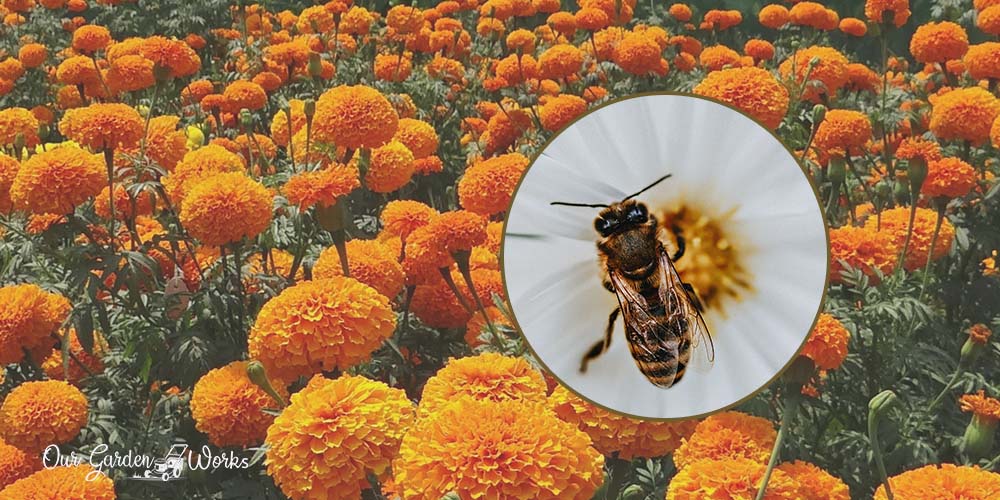Marigolds produce a strong scent that can repel some pests. So, it’s natural to wonder, do bees like marigolds? Or do they hate them too?
Bees are naturally drawn to yellow and orange blooms, like marigolds, but the only question is whether they can withstand the scent.
In this post, discover the unusual relationship between marigolds and bees. Sometimes, it pays to know the real score between beneficial insects and flowering plants to achieve your ideal garden goals.
After all, no garden will be full of blooms and fruits without pollinators.
Q: Do bees like marigolds?
Bees, especially honeybees, love marigolds. They are unfazed by its strong scent that drives other insects away.
Bees particularly love open-centered marigolds where they can easily access pollen and nectar. Planting marigolds in your garden can be a double-edged sword too.
You may attract bees around your garden, but marigolds are also the favorite snack of pests like Japanese beetles and slugs.
According to the University of Kentucky, Japanese beetles are notorious pests of roses and grapes. For this reason, gardeners and farmers use marigolds as bait for these pests to distract them away from their crops.
As a deterrent, marigolds can keep many crop pests at bay. This is why farmers and gardeners consider them one of the best companion plants for their crops. The following pests hate the strong scent of marigolds:
- Mosquitoes.
- Cabbage worms.
- Nematodes.
- Squash bugs.
- Tomato worms.
- Wasps.
Pros and cons of growing marigolds in your garden
Planting marigolds can hold pros and cons in your garden. It all depends on what plants you have in your garden or vegetable patch.
Here are some of the benefits and disadvantages that marigolds can contribute to your pest control and crop cultivation:
(1) Attractive to bees, butterflies, and hoverflies: Marigolds attract more beneficial insects than bad ones. French marigolds are the favorite snack of bees and butterflies, while African marigolds are the favorite of hoverflies.
(2) Ideal companion plants to squash, cabbage, and tomatoes: Planting companion plants is a strategic way of growing crops wherein farmers use certain plants as bait to save their crops.
Marigolds and their essential oil are natural options to deter common pests that lay eggs or larvae in tomatoes (tomato hornworms), squash (squash bugs), and cabbages (cabbage worms). Their strong scent also deters deer, which can save your growing pine trees.
(3) Attracts pests that can kill roses and other plants/trees: While marigolds hold a lot of advantages, they can also attract new wave pests into your garden.
You should think twice about growing marigolds if you have the following plants since they attract pests, such as Japanese beetles and slugs.
- Roses.
- Horse chestnut.
- Gray birch.
- Black walnut.
- Apple.
- Cherry species.
- American and English elm.
If you want to reap the benefits of having marigolds around, especially with mosquitoes, you may plant them in strategic planting locations.
You may grow marigolds away from roses and intentionally place them around low-growing crops and mosquito-prone areas.
Buzzworthy types of marigolds
If you love the smell of marigolds and their potential invitation to more bees, here are some varieties that are more bee-magnet than others:
1. Little Gem marigolds
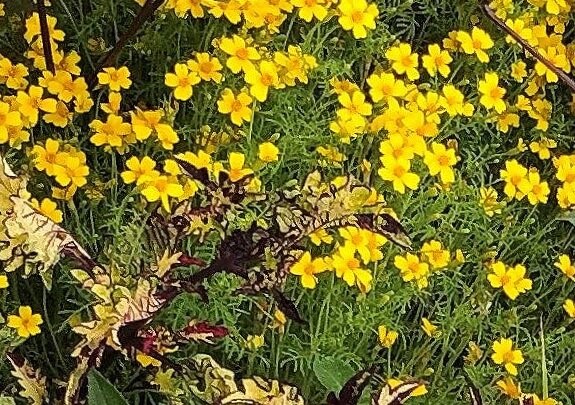
Little Gem marigolds are dwarf varieties of marigolds that possess daisy-like characteristics.
They are usually used as border plants since they grow in mounds. Bees and butterflies love these varieties since they are open-centered and have a lemon scent, making the nectar readily available.
Little Gem marigolds bloom all summer as long as they receive deadheading regularly. However, they are not long bloomers, unlike other varieties.
The best time to plant these varieties is during April or May. They often bloom from May to September.
Little gem marigolds grow in acidic to neutral soil pH levels (5.5 to 7.5). They are also more frost-hardy and can withstand temperatures around 32°F. They are more drought-tolerant than other varieties and need less watering.
Here are some varieties that you may want to add to your garden:
(1) Lemon Gem, or Mexican marigold, has daisy-like blooms with lacy foliage. It is well-loved for its citrus scent and low-growing mound behavior.
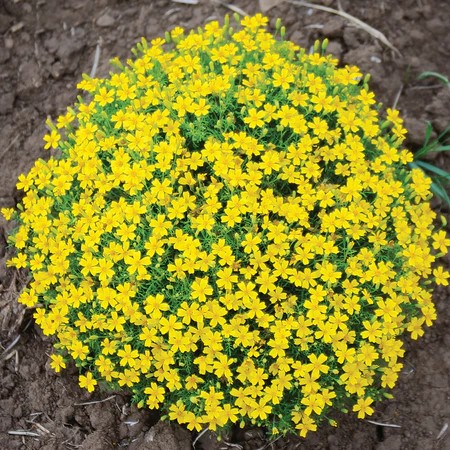
(2) Tangerine Gem is an edible type of marigold that grows in low mounds and produces the same citrus scent as the lemon gem. It attracts beneficial insects like ladybugs, hoverflies, bees, and butterflies.
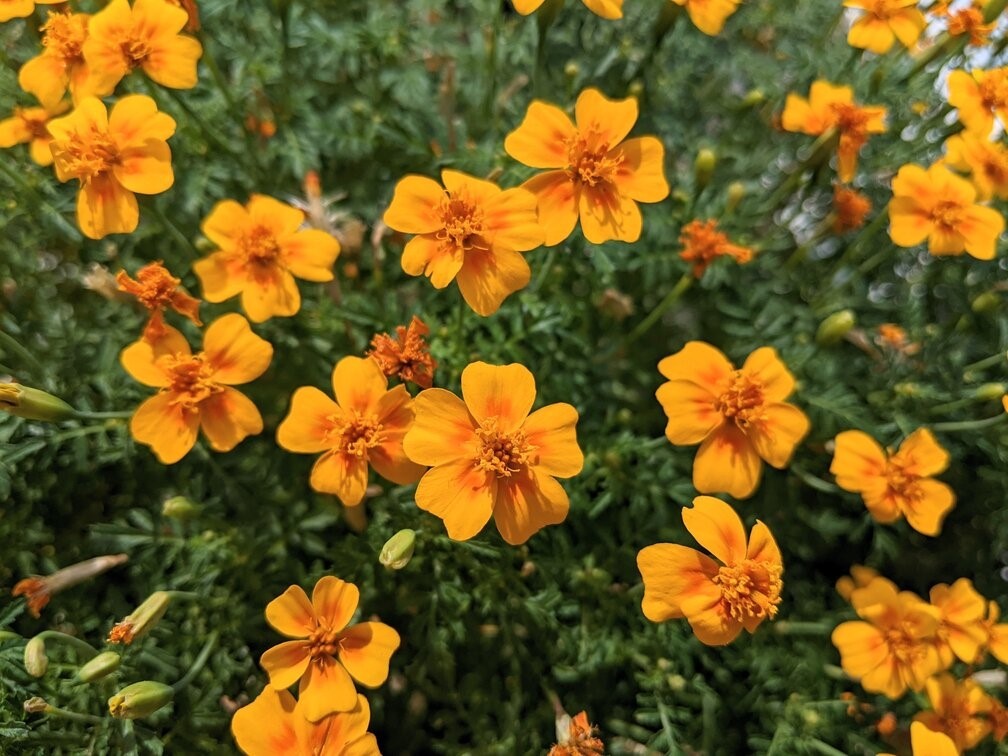
You might like: Pollinator Magnets: Does Rosemary Attract Bees?
2. French marigolds
As a garden favorite, French marigolds are brightly-colored annual blooms that come in daisy and pom-pom-like flowers. They are heat-tolerant and can adjust better to wet conditions than African marigolds.
French marigolds are drought-tolerant, deer-resistant, and thrive in full sun. Gardeners favor them because of their irresistible scent and for being a pollinator magnet.
Different varieties of marigolds serve specific purposes in the horticultural industry with their insecticidal properties.
Bambino
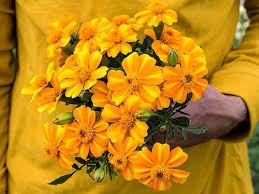
Bambino is a yellow and orange striped dwarf variety that produces single-layered blooms. Pollinators love it for its easily accessed nectar and pollen.
Bolero
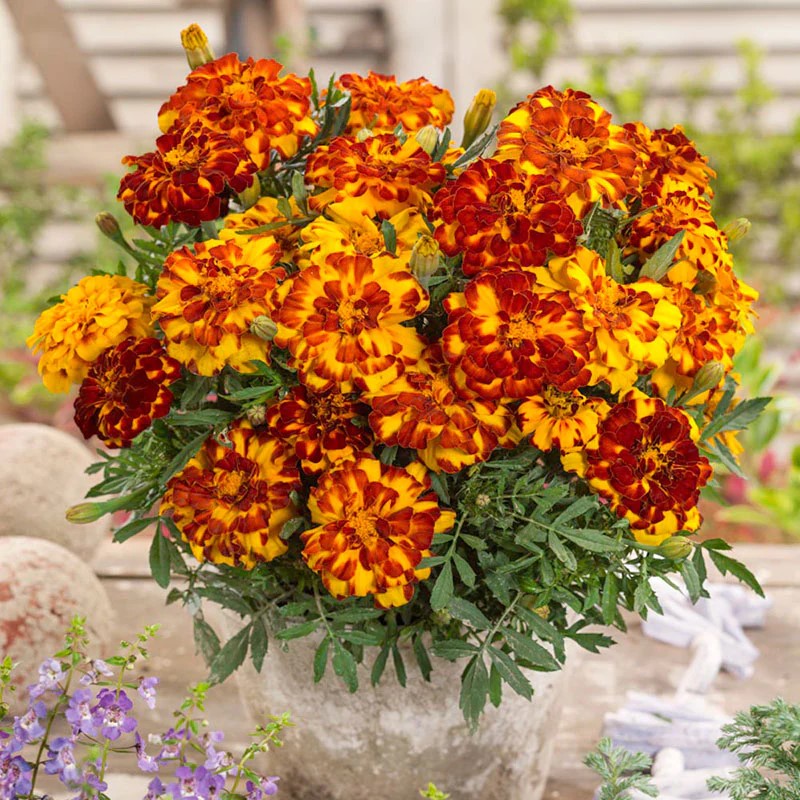
Bolero is a perfect variety to use as a companion plant for lettuce and cabbage. It can grow up to 12 inches and produce double blooms with a touch of yellow and burgundy.
Court Jester
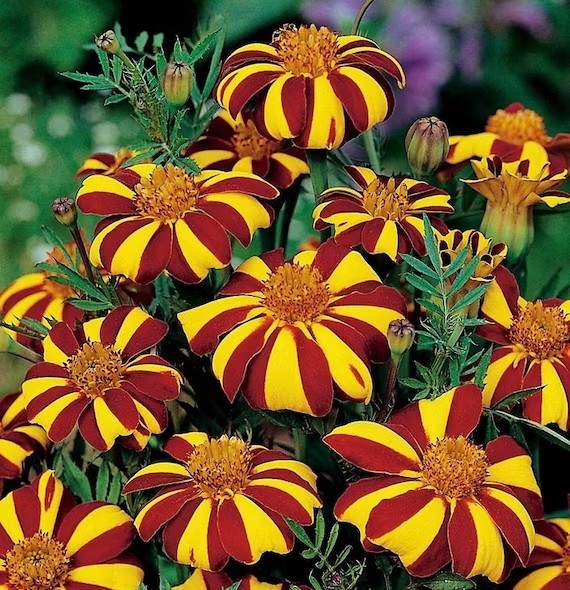
Court Jester is a low-growing variety with peculiarly-colored blooms. Its single-layered flowers have petals with alternating colors of yellow and burgundy.
Gardeners consider it an ideal companion plant for bok choy and ground cherry.
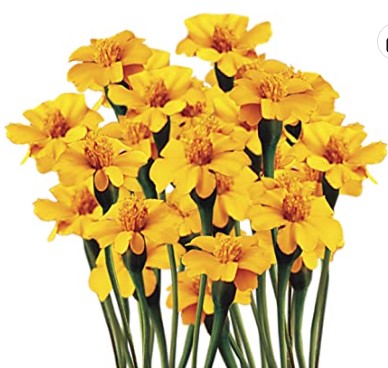
Golden Guardian is a simple single-layered marigold variety with a powerful nematicidal effect against root-knot nematode and resistance to Alternaria leaf spot commonly found in the nightshade family of plants. Therefore, it makes the best companion plant for tomatoes.
Legion of Honor
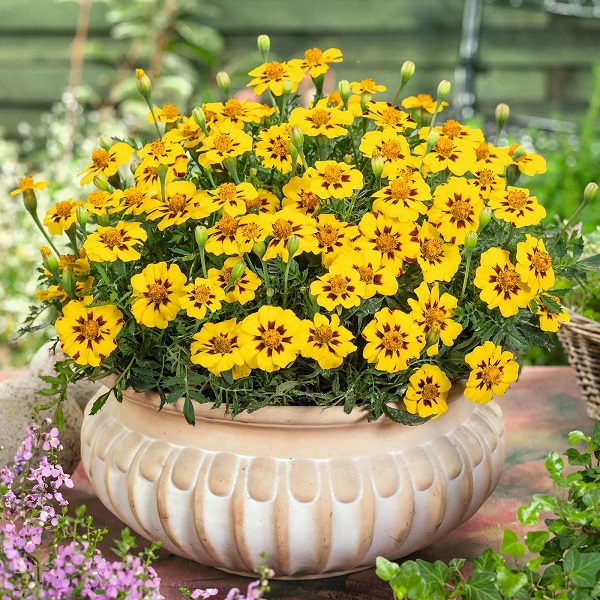
Legion of Honor is a low-growing marigold variety that produces single-layered blooms with yellow-edged burgundy petals.
It is an heirloom cultivar that resembles the medal used for bestowing the French Order of Merit. Due to its height, most gardeners use it as a companion plant for cauliflower.
Aside from the ones listed above, Brocade and Colossus red gold produce one of the most beautiful blooms from the group of French marigolds.
Many gardeners are fans of French marigolds because of their contribution to crop development and continuous hybrid development each year, which makes them more disease and pest-resistant.
3. African or Aztec marigolds
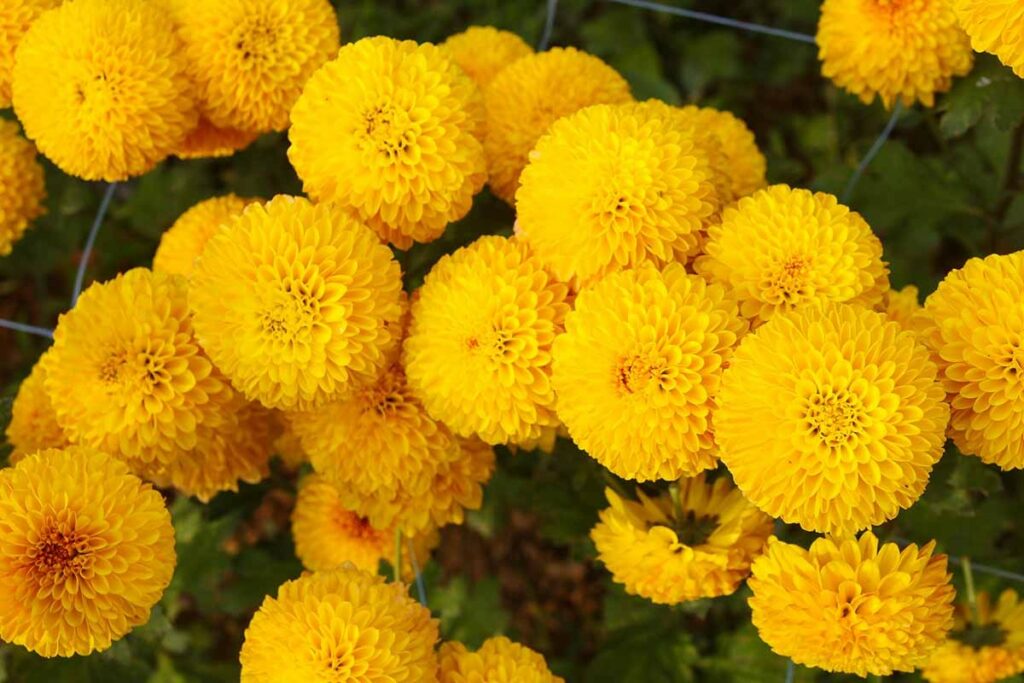
African marigolds, popularly known in Mexico as Flor de muertos (flower of the dead), are herbaceous perennials that grow pom-pom-like blooms from early spring to early fall. It is bushier than French marigolds and less tolerant of wet conditions.
Unlike other marigolds, varieties under African marigolds hold medicinal properties and are highly effective against nematodes Pratylenchus penetrans. It is a popular flower in Mexico used in festivities and folk medicine.
African marigolds are rich in carotenoids that can help treat and prevent the following conditions:
- It contains lutein that helps prevent eye conditions like cataracts and macular degeneration.
- Aside from lutein, the carotenoid xanthophyll contributes to the prevention of heart disease, stroke heart attacks, and cancer.
- African marigolds can treat digestive conditions such as indigestion, colic, diarrhea, and stomach pain.
- It also helps in treating parasitic health conditions and treatment for respiratory disorders like the common flu, colds, and bronchitis.
- Additionally, it may also help treat some gynecological conditions.
African marigolds will make it hard for you to decide which marigolds to pick due to their beautiful blooms and tons of benefits to human health and gardening.
Here are some of the must-try African marigolds to choose from:
Hawaii
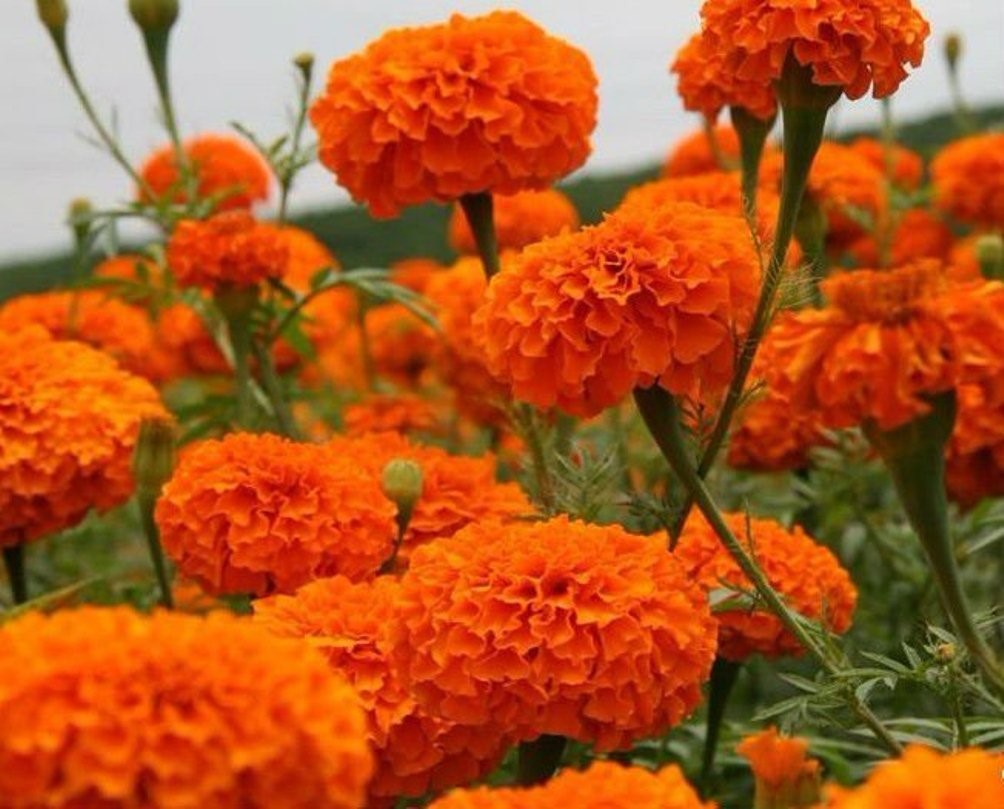
Hawaii is a 3-foot-tall shrub with big rounded flower heads with ruffled petals.
Due to its height, it makes an ideal companion plant for tomatoes and peppers to deter insects, deer, and other pests.
Crackerjack marigold

Crackerjack is an heirloom variety that produces giant blooms looking like puff balls. It has all the medicinal properties that African marigolds are known for.
Hawaii marigolds serve as an insecticidal plant and herbal medicine. Its blooms are used for teas and salads, while its roots can be used as a laxative.
Kilimanjaro White
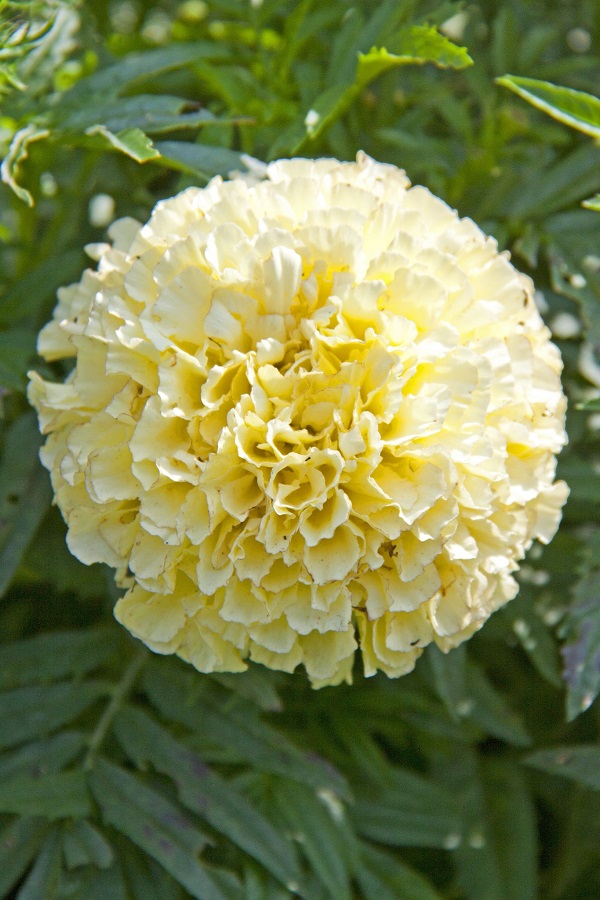
Marigolds are known to have blooms in yellow or orange. However, you may also enjoy their scent in the white and puffy flowers of Kilimanjaro White.
As a plant, it is drought-tolerant and helps attract butterflies into your garden. The blooms are also edible and can be added to salads or garnished on desserts.
Moonlight
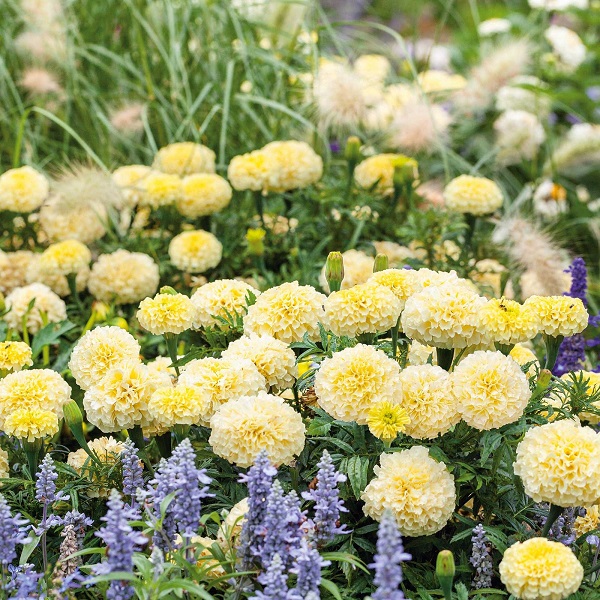
Moonlight is a unique marigold variety that produces pale yellow blooms similar to the moonlight.
Its big puff blooms attract butterflies and other pollinators, which makes it an ideal addition to flower beds and close to blooming fruit trees.
4. Pot marigold
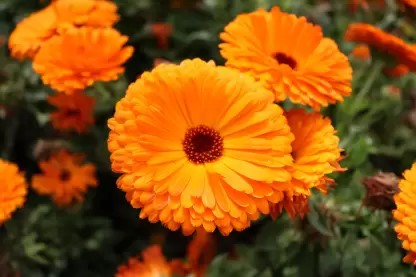
Calendula officinalis, or pot marigold, is an open-centered variety of marigolds that attracts all beneficial pollinators like bees.
Gardeners use them as food plants or baits for their crops for the larvae of the following pests:
- Cabbage moth.
- Gothic moth.
- Large yellow underwing.
- Setaceous Hebrew character.
Aside from its insecticidal use, pot marigold is a medicinal plant. According to a study, pot marigold extract or tea can help treat or manage the symptoms of polycystic ovarian syndrome or PCOS in women.
Its other health benefits include:
- A healthy alternative to saffron and a good option for tea.
- The florets make an ideal addition to salads.
- Used as a poultice to heal wounds and cuts faster.
- Bloom-infused water serves as eye drops.
Here are some of the best calendula varieties that you can plant to attract more beneficial insects and deter pests:
Indian Prince
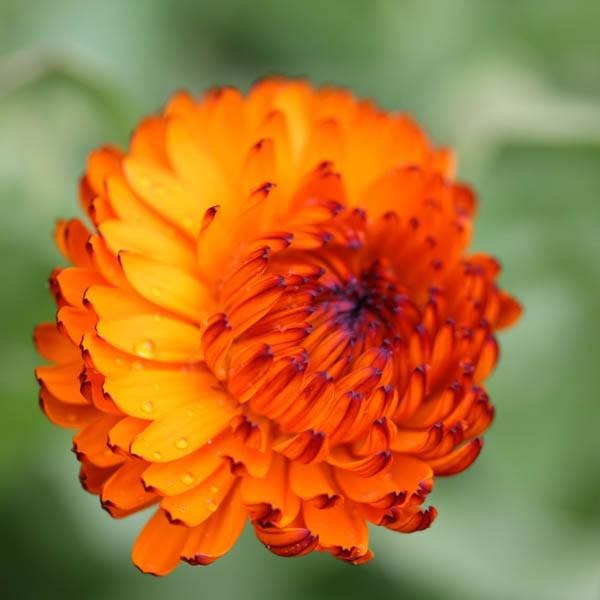
Indian Prince is a long-stemmed pot marigold variety ideally grown as cut flowers for its deep orange blooms with petals touched with mahogany or brown colors.
Its open-centered blooms attract all beneficial insects and produce a sticky sap that attracts pests away from crops. You may eat its flowers and leaves and add them to your meals.
Snow Princess
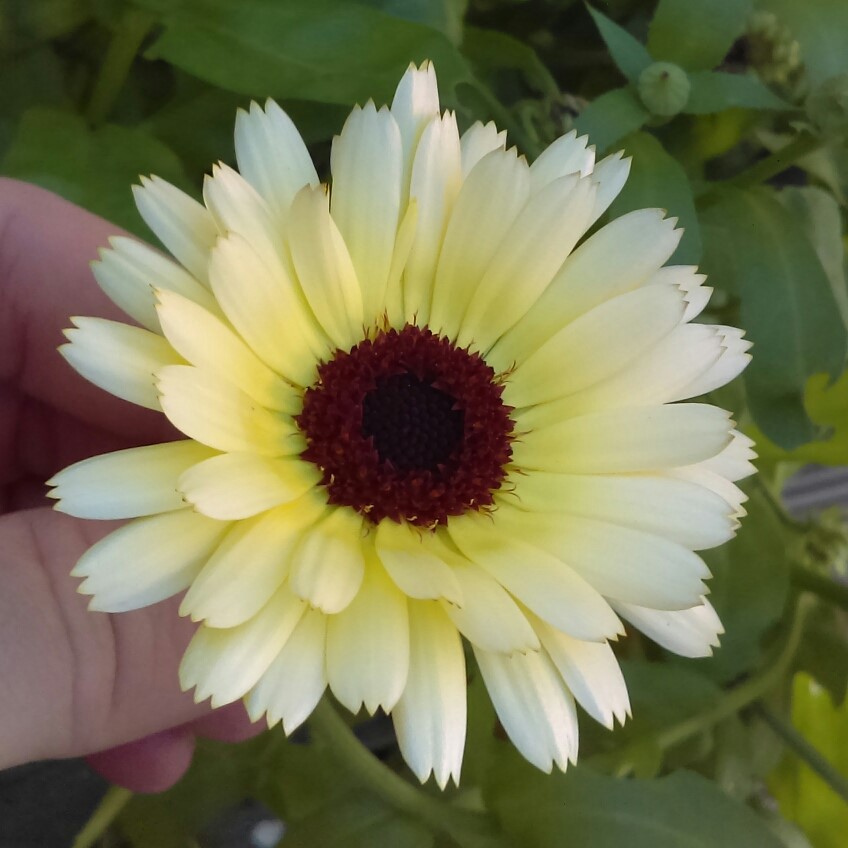
Snow Princess is a compact and hardy marigold variety famous for its gradient yellow and white blooms. It is open-centered and has a semi-double layer of petals.
Unlike other marigolds, it slowly dies mid-summer and should cut back to the ground after flowering. Its beautiful blooms are ideal cut flowers for bouquets and vases.
Apricot pygmy
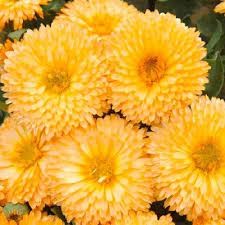
Apricot pygmy is one of the pygmy series of pot marigolds that produce daisy-like apricot blooms from summer to autumn. They have double blooms and unique colors, making them a good option as cut flowers and an ideal snack for beneficial pollinators.
Final Thoughts
Who would have thought that the marigolds found in most gardens hold so much benefit to beneficial insects and human health?
Due to their numerous benefits in human health and horticultural space, they are among the must-haves in any garden, next to herbs.
So, do bees like marigolds?
Absolutely! They are just fond of the ones that give them easy access to nectar. Adding marigolds to your summer blooms will make your buzzing garden helpers happy.
Which is your favorite marigold variety and why? Let us know in the comments!
Also, please share this post with your friends and let them discover its benefits in horticulture and human health.
